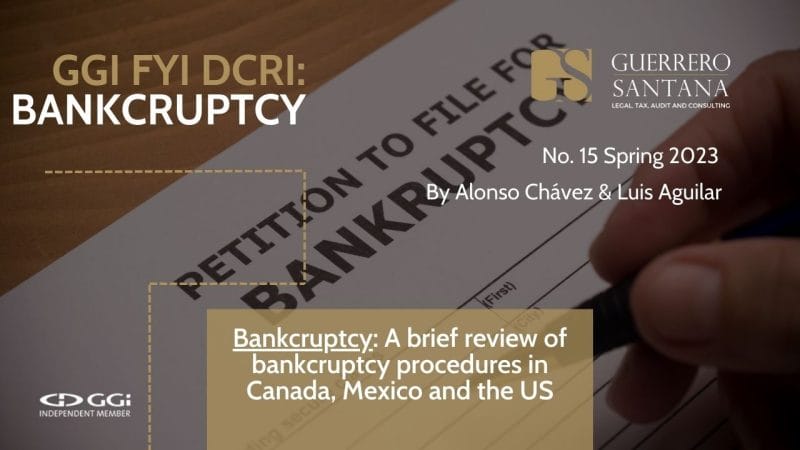
Bankruptcy is a legal proceeding no individual, business, or business professional ever wants to be in, yet it is one that offers a lifeline for businesses to repay their debts and offers the opportunity to start anew.
For starters, what is bankruptcy? Bankruptcy is a legal procedure which helps people or corporations in a state of insolvency to continue operating while liquidating their assets to pay their debts, or creates a repayment plan in an orderly manner.
Though bankruptcy has the same goal across North America, there are some distinctions in the specific procedures of each country that are some distinctions in the specific procedures of each country that are important to point out, especially in our increasingly interconnected economy.
The US has perhaps the most well-known bankruptcy procedure, which is colloquially referred to simply as Title 11. US bankruptcy code is divided into nine chapters, each pertaining to a specific aspect of the procedure. Most notably chapters 7, 11 and 13, which correspond to: liquidation, business reorganisation, and individual adjustment of debt respectively. The bankruptcy procedure starts by filing in US bankruptcy courts and is governed by federal law; however, state law is often applied with regard to exemptions and the property rights of debtors.
In some cases, though not a general rule,a trustee will be appointed to supplant the debtor’s management as well as to oversee the procedure.
In Canada, bankruptcy procedure is governed primarily by two pieces of legislation: the Bankruptcy and Insolvency Act (BIA), and the Companies ‘Creditors Arrangement Act (CCAA). The applicability of each is determined mainly by the amount owed by the debtor, as well as the nature and intention of the bankruptcy itself.
A licensed bankruptcy trustee (LAT) is appointed to monitor the debtor’s business and financial situations. LATs are backed by state-certification and are responsible for, among other things, collecting and disposing of the bankrupt’s property, reviewing and settling claims of creditors, and distributing the dividends to the unsecured creditors.
In Mexico, bankruptcy procedures are regulated in the Ley de Concursos Mercantiles (LCM), which is a federal law of public order and general interest. The Mexican state is interested in both the preservation of enterprises as well as the avoidance of general breaching of payment obligations. Most of the LCM seeks to closely unite these two guiding principles.

Bankruptcy procedures in Mexico consist of two stages: (i) conciliation, which aims to reach an agreement with creditors; and (ii) bankruptcy, which seeks the liquidation of assets. The LCM provides for the mandatory appointment of a conciliador (conciliator) to supervise the debtor’s management and, to a certain extent, control their financial activities.
All three countries share quite a few similarities – bankruptcy procedures can commence either by voluntary or involuntary means by the debtor; procedures are filed and resolved in federal courts; inventory of priority of creditors is a crucial principle; forbearance agreements play an important role in the proceedings.
Filing for bankruptcy, though tough, is not a sign of failure. Understanding the scope and implications of bankruptcy in each country may mark the difference and set a path for business and economic comeback.
See the GGI | Global Alliance published article on the following link: